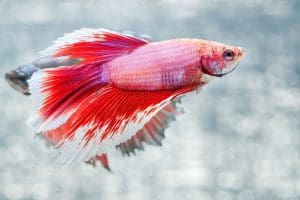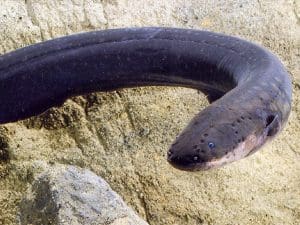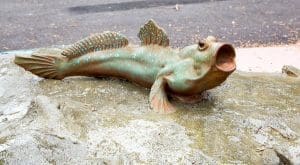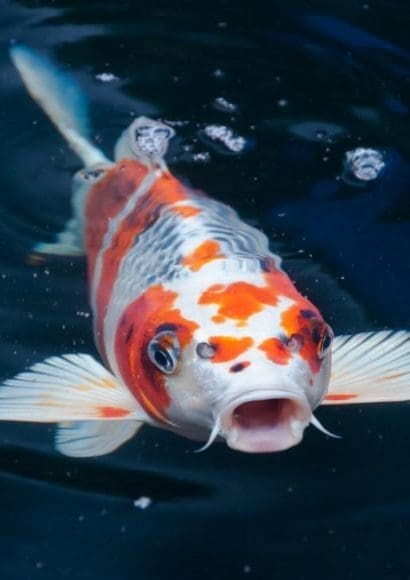
Imagine that fish have special organs called “gills.” The gills are like tiny sponges on the sides of the fish’s head. When fish swim in the water, they open and close these gills, as if they were moving their fins.
Water enters through the fish’s mouth and passes through the gills. There, something amazing happens: the gills capture the oxygen from the water, which is like the air for fish. At the same time, the gills let out carbon dioxide, which is something fish don’t need.
It’s as if the gills were magical filters that turn water into air so that fish can breathe underwater. After this exchange of oxygen and carbon dioxide, the water leaves the gills, and the fish is ready to keep exploring its watery home.
Contents
Anatomy and Respiratory Structure of Fish.🐟
The anatomy and respiratory structure of fish play a crucial role in their ability to breathe and survive underwater. Unlike mammals, which rely on lungs to extract oxygen from the air, fish have evolved a specialized system that allows them to extract oxygen directly from the water.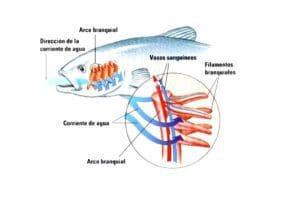
One of the key respiratory organs in fish is the gills. Gills are located on the sides of their bodies, protected by bony structures called opercula. The gills consist of thin filaments that are densely packed with tiny blood vessels. These filaments provide a large surface area for the exchange of gases.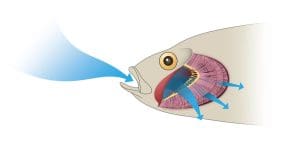
The process of oxygen uptake in fish relies on a countercurrent exchange system. As water flows over the gill filaments, blood flows through the tiny blood vessels in the opposite direction. This arrangement allows for efficient extraction of oxygen, as it ensures a continuous diffusion gradient along the entire length of the gill filaments.
Respiration Process of Fish.🐟
The respiration process of fish is a fascinating mechanism that enables them to extract oxygen from water and expel carbon dioxide, allowing for their survival in an aquatic environment. Unlike mammals, fish do not have lungs but instead rely on specialized respiratory organs called gills.
The respiration process begins with the fish opening its mouth, allowing water to enter. As the water passes over the gills, oxygen dissolved in the water is extracted through the thin walls of the gill filaments and enters the bloodstream. At the same time, carbon dioxide, a waste product of metabolism, diffuses from the bloodstream into the water to be expelled.
The extracted oxygen binds to hemoglobin molecules in the fish’s blood, which are responsible for transporting oxygen to various tissues and organs throughout the body. This oxygen-rich blood is then distributed to the fish’s cells, providing them with the oxygen needed for cellular respiration.
how do gills work?.🐟
Gills are like the lungs of fish, but for water instead of air. If you imagine a fish as a swimmer underwater, the gills are their special way of breathing and getting the oxygen they need to live in the water.
Gills are like small sheets or little fins that are inside the fish’s head, behind their eyes. When the fish swims and water goes into its mouth, the gills do a magical job. They absorb the oxygen that’s in the water and get rid of the carbon dioxide, which is something the fish doesn’t need.
It’s as if the gills were filters that capture the oxygen and release the carbon dioxide. This oxygen is very important because it gives the fish energy to swim, eat, and do all the things they enjoy.

do fish have lungs.
Imagine that fish live in the water, right? Well, instead of having lungs like us humans to breathe, fish have something called “gills.” Gills are like tiny “little windows” they have on the sides of their heads, and they work like special filters that allow them to get oxygen from the water.
Here’s how it works: When water passes through the gills, they grab the oxygen that’s in the water and get rid of the carbon dioxide (which is what we exhale when we breathe). This way, fish can get the oxygen they need to live directly from the water they swim in.
In summary, while we humans use lungs to breathe air, fish use gills to get oxygen from the water and get rid of carbon dioxide. It’s a very interesting adaptation that lets them live and move underwater!
Special Adaptations of Some Fish.🐟
Fish exhibit a remarkable array of special adaptations that allow them to thrive in diverse aquatic environments. These adaptations have evolved over time and have contributed to the success and survival of various fish species. Here are some examples of special adaptations found in certain fish:
Laberinth Fish:
Certain species of labyrinth fish, such as bettas and gouramis, possess a specialized organ called the labyrinth organ. This organ allows them to extract oxygen from the air by gulping it at the water’s surface. This adaptation enables labyrinth fish to survive in oxygen-depleted waters or in habitats with stagnant or low-quality water.
Electric Fish:
Some fish, like the electric eel and electric catfish, have evolved the ability to produce and detect electric fields. They possess specialized electric organs that generate electric charges used for navigation, communication, and hunting. These adaptations give them a unique advantage in their environment, allowing them to sense and interact with their surroundings in a way that is not possible for other fish.
Bioluminescent Fish:
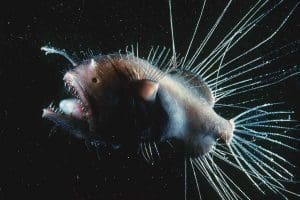
Certain deep-sea fish, such as anglerfish and lanternfish, possess the ability to produce light through bioluminescence. They have specialized light-producing organs called photophores that emit light, often used for communication, attracting prey, or camouflage. These adaptations enable them to navigate and survive in the deep, dark waters where little to no sunlight penetrates.
Pufferfish:
Pufferfish have the extraordinary ability to inflate themselves by rapidly ingesting water or air, transforming into a much larger, balloon-like form. This inflation serves as a defense mechanism to deter predators by making the pufferfish difficult to swallow or attack. Additionally, some species of pufferfish also possess highly toxic substances in their bodies, making them unappealing or even deadly to potential predators.
Mudskipper:
Mudskippers are a type of fish that have adapted to live in intertidal zones, where they encounter both land and water. They possess specialized pectoral fins that act as limbs, allowing them to move and even “walk” on land. Mudskippers can breathe through their skin and the lining of their mouth, allowing them to survive in environments where oxygen levels in the water may be low.
If you are a fan of peculiar fish, I invite you to read our article about Discover Abyssal Fishes.
Other Respiratory Mechanisms in Fish.🐟
In conclusion, fish exhibit a fascinating array of respiratory mechanisms beyond the traditional gill-based respiration. While gills are the primary respiratory organs in most fish species, certain adaptations have led to the development of alternative respiratory mechanisms in some fish.
One notable example is the presence of the labyrinth organ in labyrinth fish, allowing them to extract oxygen from the air. This unique adaptation enables these fish to survive in environments with limited dissolved oxygen, expanding their range of habitats.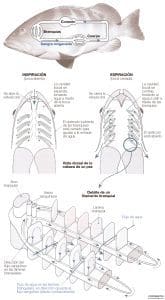
Bioluminescent fish, such as anglerfish, employ the remarkable ability to produce light. This adaptation allows them to communicate, attract prey, or blend in with their surroundings in the deep, dark waters where they reside.

